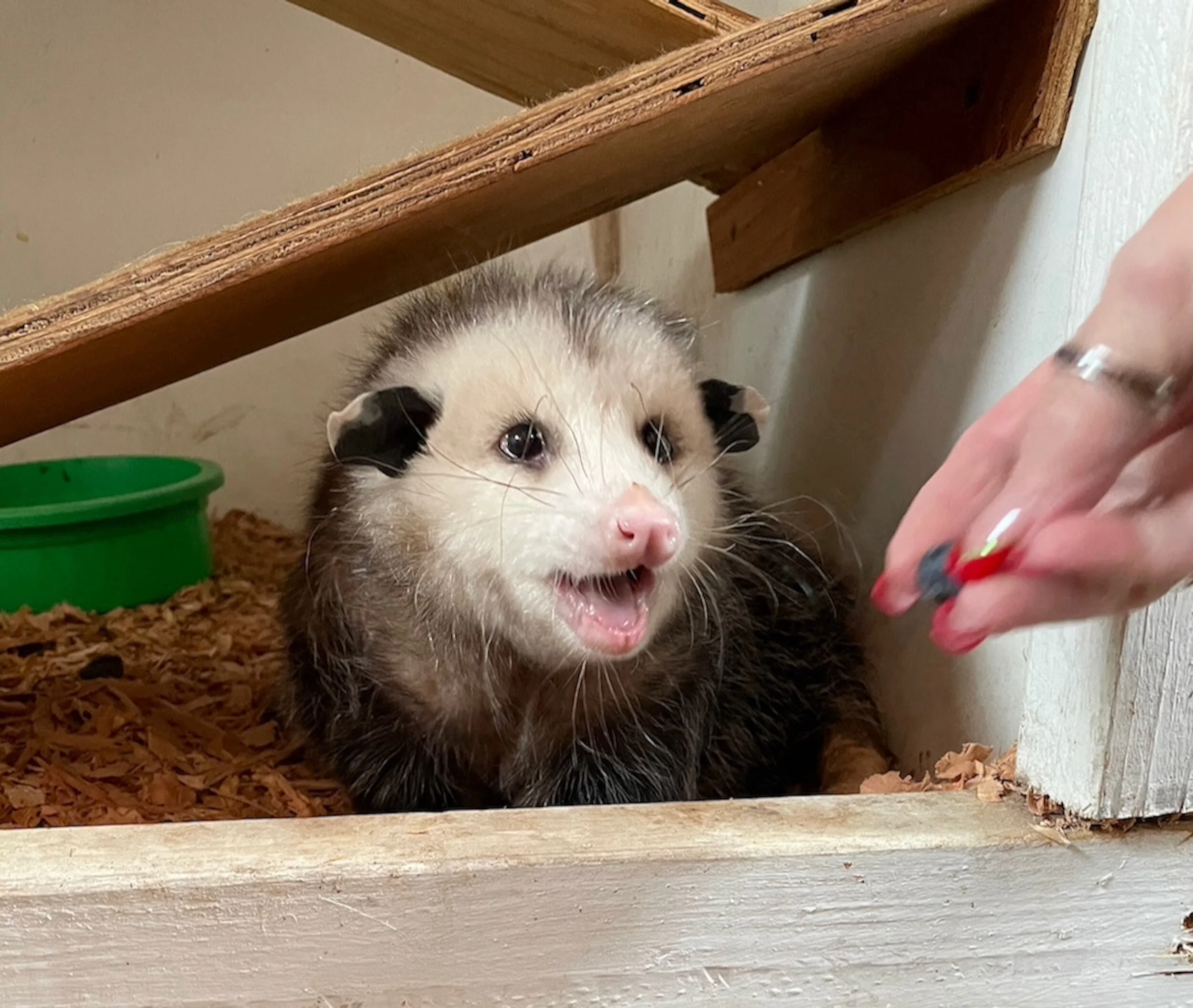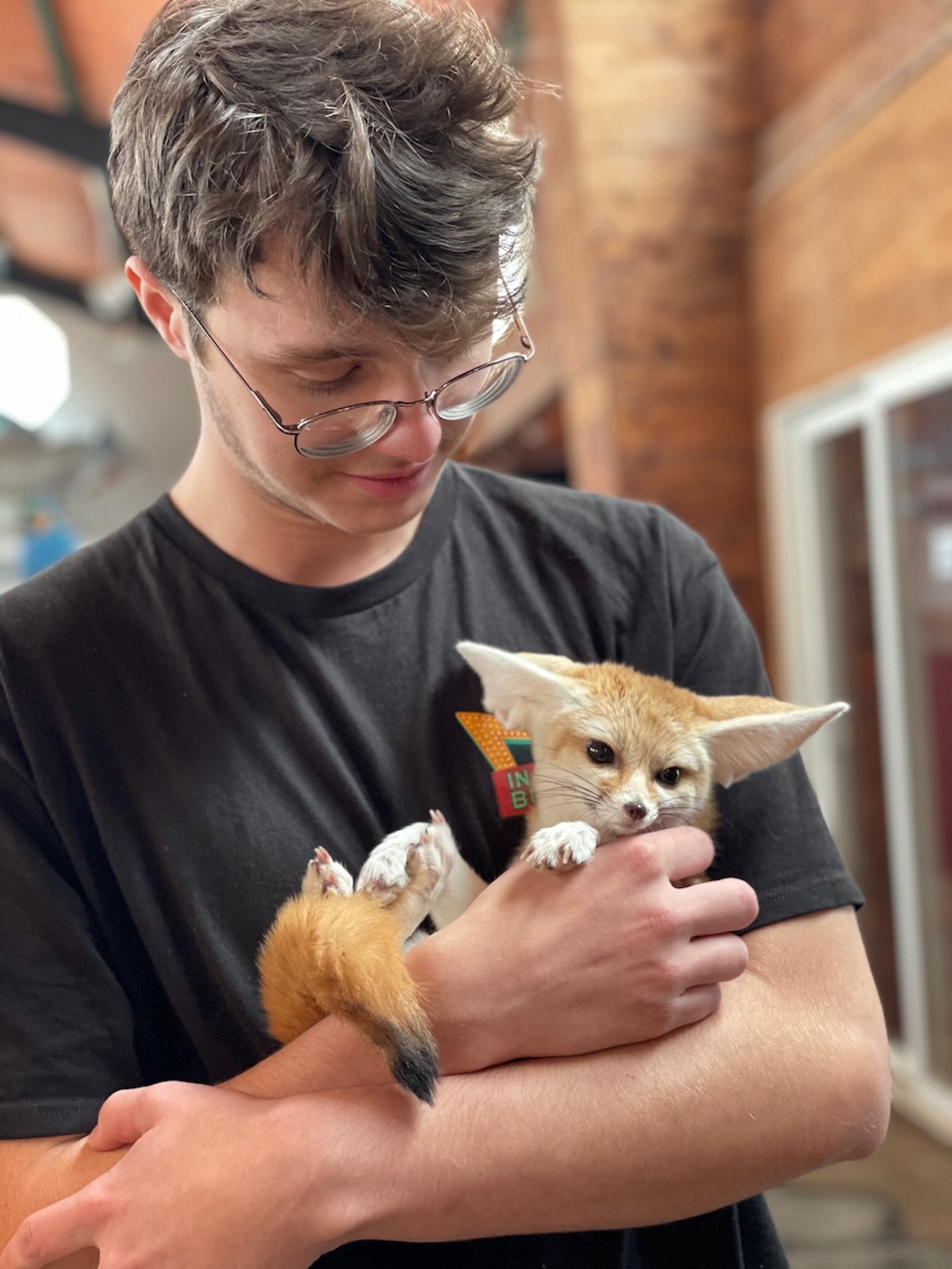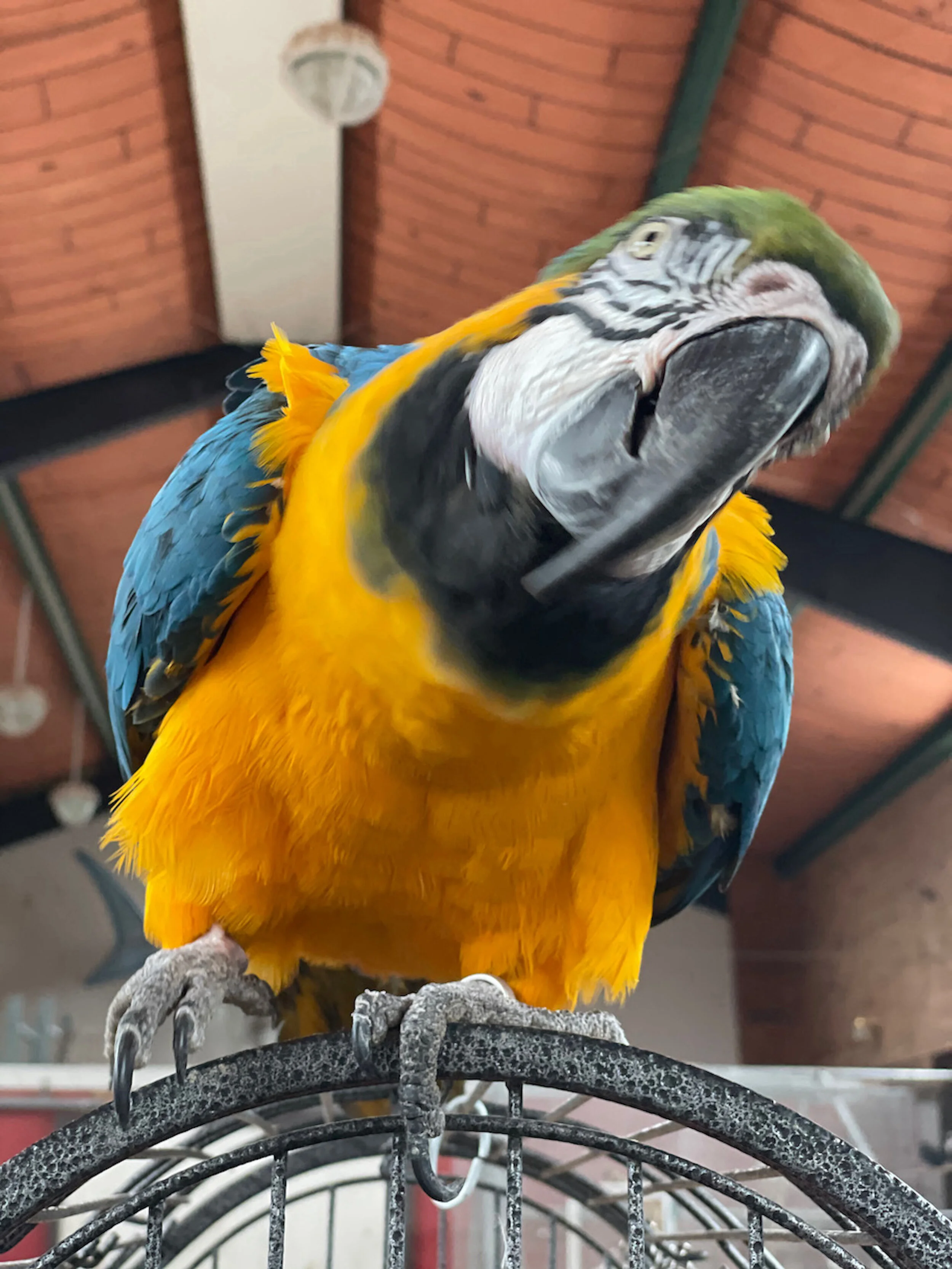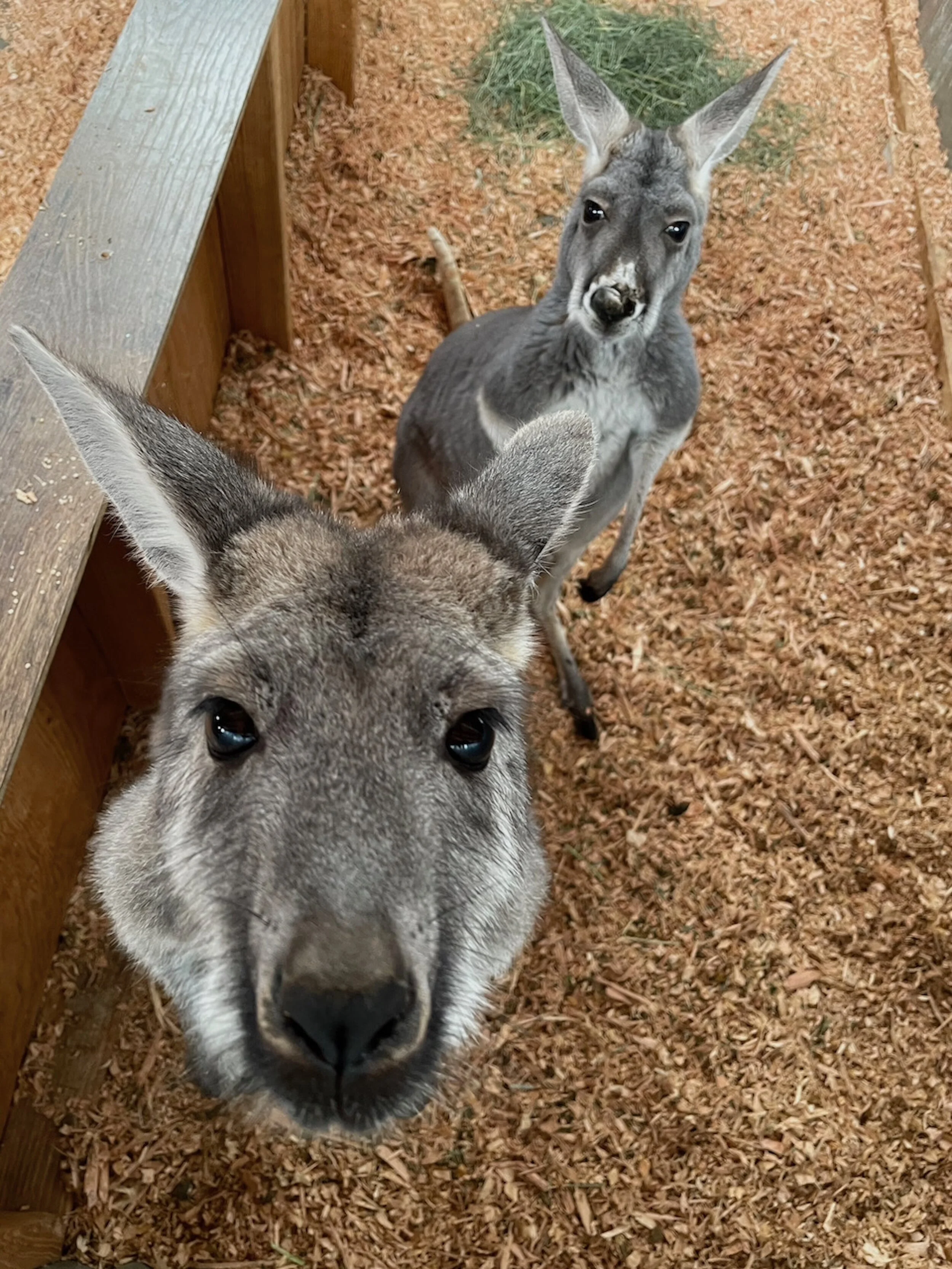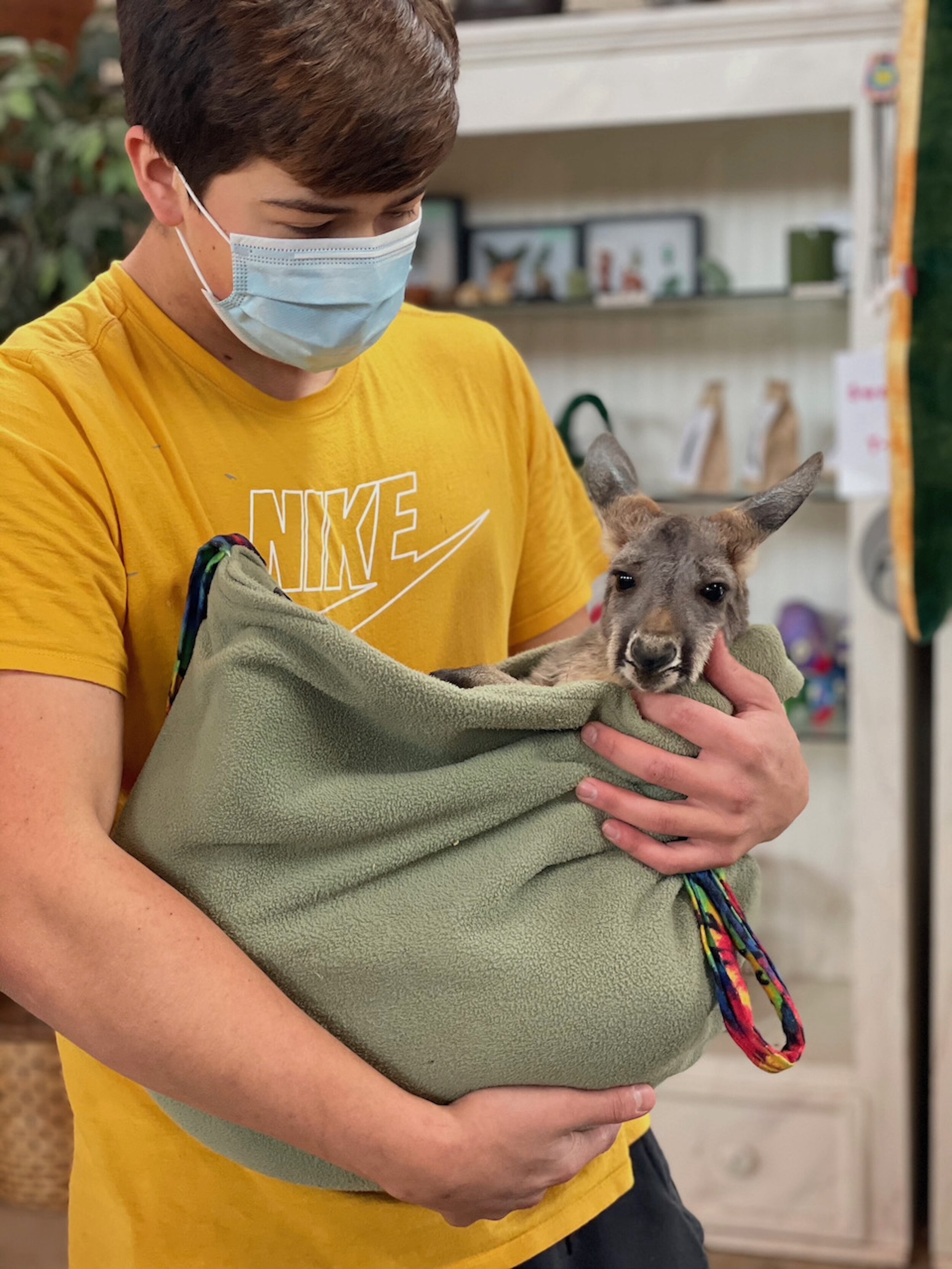Ready for a zoo meeting?
Get a little face time with some of the coast’s cutest residents
Story & photos by Gretchen Ammerman
Oregon Coast TODAY
Words people usually associate with animal rescue are ones like, “fluffy,” cuddly” and “cute.” Not, usually, “scaly,” “poisonous” or “illegal.”
Welcome to the world of exotic animal rescue, which Blain Brown, founder of Newport Discovery Zoo, got into because he actually is a fan of the scaly, poisonous and, by default, illegal.
“So many people will buy an animal thinking it’s a great idea,” he said. “Then they find out that they can’t keep it because of feed costs, because the animal grows larger than they expected or because ownership of them is actually banned where they live.”
For example, alligators were hot for a hot minute, but have been illegal to own in Oregon for more than a decade.
“I used to get a dozen alligators a year,” Brown said. “Luckily, pet stores can’t sell them anymore, but people still find ways to get them.”
So many of these unfortunate animals are then punished for someone else’s crime.
“I saw so many animals being destroyed because of people’s bad choices,” Brown said. “I just wanted to try to save as many as I could, and get them to a proper home, so I opened this place in 2016.”
The rent for the facility and feed costs for Brown’s pet project began eating through his savings at a pretty quick pace.
“If the animal requires fresh meat, they get fresh meat,” Brown said. “It’s extremely important to me that all the animals get fed a diet that is as close to what they would eat in the wild, and that gets expensive very quickly.”
The zoo has banks of aquariums housing snakes, lizards, turtles and even tarantulas, but it’s usually the photo ops with cute fuzzy creatures, like sloths and binturongs, that bring the most people eager to pay the entry fee for a photo-op.
Visitors should not, however, show up expecting to see the same animal they saw on someone else’s social media feed, because Brown won’t keep an animal just to bring people through the door.
“I got some flack for re-homing the sloths,” he said. “But I’m not here to just expose people to these animals; I’m here to get them to a real home, like a sanctuary created specifically for their species. I think of this as less of a zoo and more of a halfway house.”
Exposure is part of his mission, though.
“People can’t protect what they don’t understand,” he said. “My hope is that being exposed to these creatures will make people more likely to help them in the future, whether by supporting rescue or simply being an advocate.”
Exposure at the zoo is high; creatures great and small wander the hallways or are brought to the visitors for a cuddle. During my visit, piglets scuttled under bird cages while the birds that lived in them perched or flew overhead. Pet parrots often perch because it is their only option; not so at the NDZ.
“We don’t clip their wings, so they can fly around here all they want,” Brown said. “They are so smart — Polly bit me once then said, ‘Ouch,’ before I did. It was hilarious.”
After the enclosure for a tortoise was opened to give me an introduction, I watched as he climbed over the small doorway ledge at the speed of tectonic plate shifting. He continued to amble about for the rest of my visit, managing to look like a decorative rock, while simultaneously being almost constantly underfoot, especially impressive for a creature his age.
“Jonathan is estimated to be roughly 189,” Brown said. “He’s originally from St. Helena Island, and they have pictures there of him in 1907.”
The super photo-op species during my visit included a few kangaroo joeys of differing heights and a few full-grown fennec foxes, an invasive species with faces that put Baby Yoda to shame. I cuddled one that volunteer Vinny Onestar deposited into my arms for as long as it took to plan my escape with him under my jacket, then think about how my dog, waiting patiently in the car, would react. After he captured a photo with me and the fox, I reluctantly handed the fox back to Onestar and we continued the tour.
On the cuteness scale, I was surprised to be bowled over by a possum, an animal that had been brought to the zoo as a victim of a recent local event.
“We have some animals here that were victims of the Echo Mountain fire,” Brown said. “People think of possums as pests, but we took them in. They are really smart animals. They really love blueberries.”
Almost as if on cue, a volunteer appeared and started offering blueberries to a possum one by one. He would take each berry in his tiny hands and nibble on like it was manna from heaven.
Adorable.
After simply operating without a profit for a few years, Brown finally applied for and was granted formal 501(c)(3) non-profit status. With that, and the fact that he advertises the zoo as a rescue, he gained some help with expenses but gained oversight from state agencies in Oregon and Washington, including the US Department of Agriculture, the US Department of Fish and Wildlife and the Washington Exotic Animal Rescue.
“We get regular unannounced site visits,” Brown said. “But we welcome them. We want visitors to be assured the animals are getting the proper level of care.”
Brown is personable and always ready to spin a yarn or two, but he knows who the real stars at the zoo are, and he’s happy to let them take the spotlight, knowing that they are doing an important job.
“I’m here to entertain,” he said “They are here to educate.”
The Newport Discovery Zoo is located at 3101 SE Ferry Slip Road, in the Aquarium Village. Visits are currently by appointment only, and tickets are $10 for adults, $8 for children and free for kids under two years old. To make a reservation, go to the Newport Discovery Zoo page on Facebook or call 541-961-6371.

